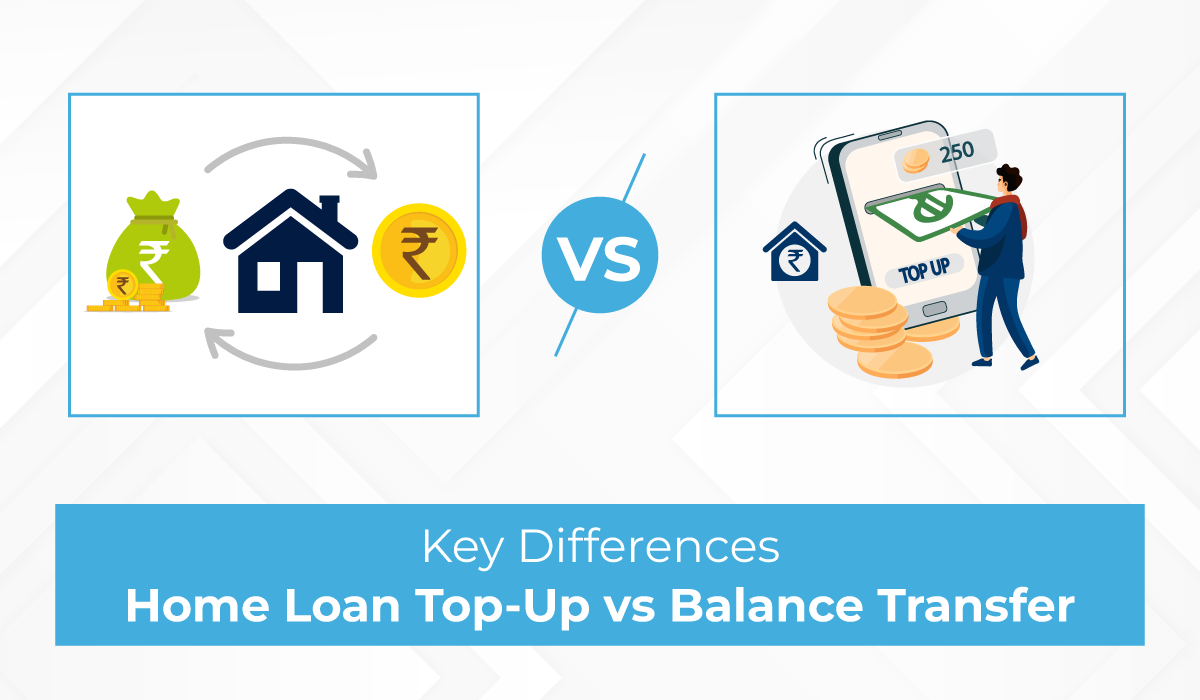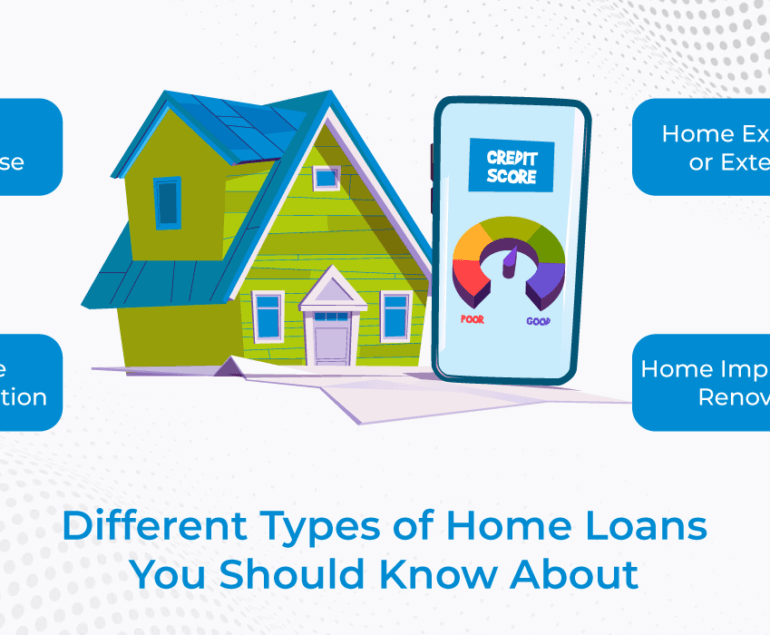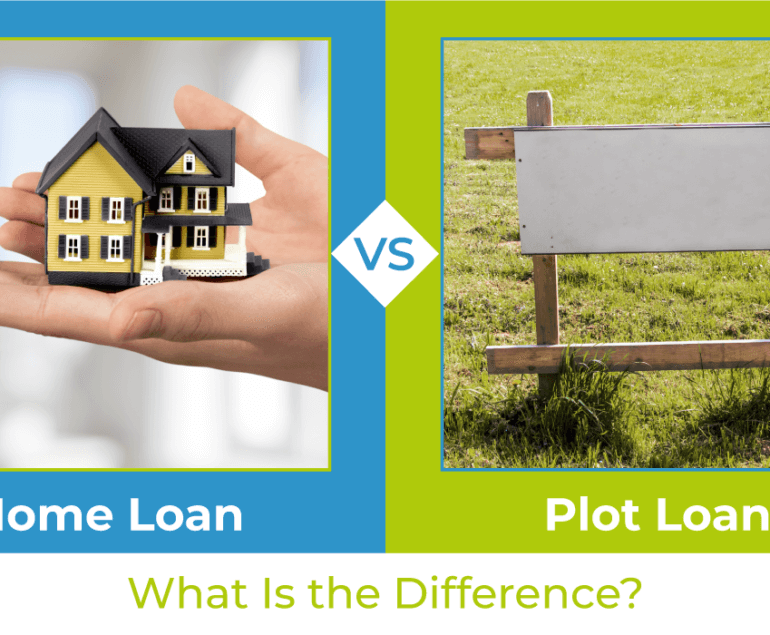Home loan is a great resource that comes in handy when you need financial aid in building the home of your dreams. There are several different types of home loans that can help you achieve that dream. In this guide, we’ll focus on two types of home loans, home loan top-up and balance transfers.
Both home top-up loan and balance transfer, have their aspects. Top-up loans can make your budget bigger to meet extra expenses, but home loan balance transfer is better for your pocket, it helps in lowering your interest rate.
Find The Right Option Between Home Loan Top-up And Balance Transfer
Here is an article highlighting the key differences between both options to help you decide which is best.
About Home Loan Top-Up
A home loan top-up is a way for banks and financial institutions to help home buyers in addition to the principal loan they are already taking out to secure a new home loan.
A wide range of loan amounts and loan tenures are available from different lenders.
To receive the top-up loan, the borrowers can use a balance transfer to obtain the loan from either their current or a different lender.
About Home Loan Balance Transfer
Balance transfers (BT) are credit facilities that allow you to move your existing home loan balance to a new lender.
It is often driven by better loan terms from a different lender, such as lower interest rates, longer terms of repayment, lower processing fees, etc that motivates the borrower to take a loan from them.
In times of crisis, this option can help reduce your EMI, or in other words, how much interest you have to pay as a whole.
Differences Between The Home Loan Top-Up And Balance Transfer
Following the discussion of home top-up loans and balance transfers, let’s move on to determine the difference between the two and the best option.
About
Top Ups are additional loans over current loans, and a borrower can take out a top-up loan from either their existing lender or another.
Balance transfers are credit transfers from one financial institution to another where the interest rate is higher than the current rate.
Purpose
Top-ups for home loans are helpful for a variety of reasons. Since they do not have any end-use restrictions, they could be used to fund a wedding or a college education.
The balance transfer of a home loan will entail you transferring the outstanding balance from one lender to another so you can get a better interest rate which can only be used when paying off your home loan.
Tenure
A top-up loan is often done much more quickly, but it is only available for the duration of the loan.
Despite the longer processing time, balance transfers will significantly reduce repayment terms.
EMI
The interest rate on a Balance Transfer will be lower than that you paid before, so that you will spend less on interest each month.
On the other side, the loan lenders offer to top up your loan at the same rate you are paying on the running loan. If you have a loan and a loan top-up, each of the EMIs must be paid separately.
Availability
Normally, a balance transfer can be done on a home loan once you have made 12 payments.
Once the loan is repaid, you can get a top-up loan, and it’s only available if the borrower doesn’t default.
Amount
For a top-up loan, the amount cannot exceed 70-75% of the sum obtained if the outstanding loan balance is subtracted from the estimated market value of your property.
A home loan balance transfer may be permitted when the property’s value does not exceed 80 to 90 percent of the loan balance.
Eligibility criteria for a home top-up loan
- You can apply for a top-up loan three months after your home loan disbursement. As long as you have paid three EMIs on your existing home loan, most financial institutions will approve you for a top-up loan of Rs. 1 lakh.
- To sanction a top-up loan, it is necessary to check the applicant’s repayment history associated with their existing home loan.
Eligibility criteria for a balance transfer
- Your current home loan with your present lender can only be switched for a better ROI after successfully paying 12 EMIs.
- Construction or renovations shouldn’t be taking place on your property.
We have already seen the key difference between the two, now let’s focus on one of the essential similarities between these two distinct loan types. Keep in mind, when you are considering getting either a home loan balance transfer or home loan top-up, your credit score will be an important factor that lenders will consider as part of the loan application process. A good credit score can increase your chances of getting approved for a balance transfer and may also result in a lower interest rate. On the other hand, a low credit score may lead to a higher interest rate or even a rejection of your loan application. It’s important to check your credit score and take steps to improve it before applying for a home loan balance transfer.
Also Read: How Do You Get a Home Loan With a Low CIBIL Score?
Find The Right Option Between Home Loan Top-up And Balance Transfer
Conclusion
When choosing between a balance transfer loan and a top-up loan, you must consider your own needs before choosing either.
There is also the option of transferring your loan to a new provider and taking advantage of a top-up loan. If the new lender has significantly reduced your loan’s interest rate, this will be a significant benefit for you as it will allow you to pay off your loan faster.
Wondering who can help you get the best home loans at a minimal rate? Then you should look for reputed Loan providers in Mumbai with a great track record. They’ll provide you with a home loan in Mumbai and give wings to the dream of building your own house.
Are you interested in learning about other types of home loans and what they entail? Then you should take a look at our in-depth guide covering 9 different types of home loans.




